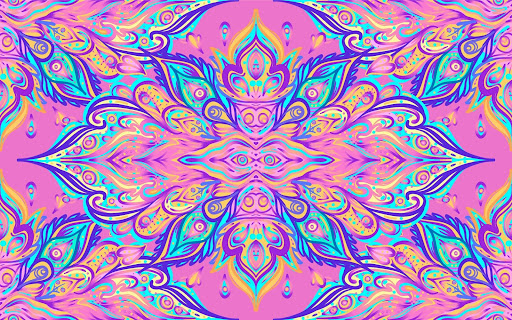Hello, fellow arts and crafts enthusiasts! Today, I am excited to delve into the fascinating world of paisley patterns and their profound influence on the psychedelic music and art movements of the 1960s and beyond.
The Origins of Paisley
Paisley, with its intricate and swirling designs, has long been a favourite among artists and fashion designers. Its origins can be traced back to Persia and India, where it was traditionally used in textiles and garments. The paisley pattern, also known as “boteh” or “buta,” is believed to represent a stylised floral spray combined with a cypress tree, a Zoroastrian symbol of life and eternity. This rich historical background adds layers of depth to the pattern, making it a timeless element in design.
Paisley Meets Psychedelia
It wasn’t until the 1960s that Paisley truly became a symbol of cultural and artistic revolution. The psychedelic era, characterised by its vibrant colours, bold patterns, and experimental sounds, embraced paisley as a visual representation of the counterculture spirit. Musicians like The Beatles and Jimi Hendrix often donned paisley shirts and accessories, making the pattern synonymous with the era’s music scene. The swirling, hypnotic designs of paisley perfectly complemented the mind-expanding experiences associated with psychedelic music and culture.
Musicians and Paisley
Musicians were at the forefront of the paisley revival. The Beatles famously wore paisley during their Sgt. Pepper’s Lonely Hearts Club Band era and Jimi Hendrix’s love for paisley was evident in his stage outfits and album covers. The pattern’s vibrant and eclectic nature mirrored the experimental and boundary-pushing ethos of the music they were creating. Paisley wasn’t just a fashion statement; it was an integral part of the visual identity of the psychedelic movement.
Paisley in Psychedelic Art
In art, paisley became a staple of psychedelic posters and album covers. Artists like Wes Wilson and Victor Moscoso incorporated paisley motifs into their designs, creating visually stunning works that captured the essence of the psychedelic experience. The fluid, organic shapes of paisley mirrored the free-flowing creativity and boundary-pushing ethos of the time.
Iconic Artworks
One of the most iconic uses of paisley in psychedelic art is seen in the concert posters of the 1960s. These posters, often used to promote rock concerts and festivals, were a riot of colour and pattern. Paisley motifs were used to create optical illusions and visual experiences that echoed the mind-altering effects of the music and culture. The art wasn’t just meant to be seen; it was meant to be experienced, much like the music of the time.
The Lasting Impact of Paisley
Paisley’s influence extended beyond the 1960s, leaving a lasting impact on subsequent art and fashion movements. Its timeless appeal and versatility have ensured its continued presence in contemporary design, from high fashion runways to DIY crafts. Designers like Etro and Dries Van Noten have kept the paisley tradition alive, reinventing the pattern for modern audiences.
Contemporary Use
In today’s arts and crafts world, paisley continues to be a source of inspiration. Its intricate designs and historical significance make it a versatile pattern for a variety of projects. From fabric prints to home decor, paisley remains a beloved motif. Craft enthusiasts can find endless ways to incorporate paisley into their work, whether through embroidery, quilting, or even digital design.
Personal Reflection
As a passionate arts and crafts fanatic, I find endless inspiration in the paisley pattern. Its rich history and cultural significance make it a perfect subject for creative exploration. Whether you’re incorporating paisley into your next craft project or simply appreciating its beauty, remember that this iconic pattern is more than just a design—it’s a symbol of artistic freedom and innovation.
Written by Alan Boal Paisley

